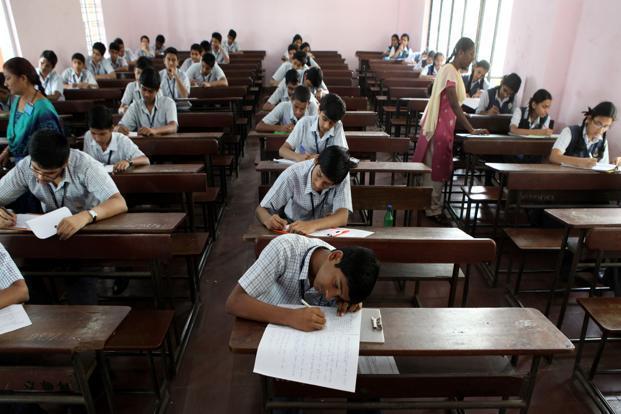
Currently, private schools can only be run as an educational charitable trust which means any profits the school makes have to be retained and cannot be taken out. In turn, the government often provides land at highly concessional rates to set up these schools. Photo: HT
In the wake of the tragic murder of a seven-year-old boy at Ryan International School in Gurugram, followed just a few days later by the ghastly molestation of a little girl at a school in the capital, the lens is once again on private schools. In any case, the business of private education has been under fierce scrutiny for a long time now with the Delhi government currently engaged in a battle of wills with private schools over fee hike which it deemed exorbitant. Government schools, by contrast, are seen as catering to the poor and the marginalized.
The manner in which the debate has been framed seems to suggest a different set of expectations from private and government schools. That relates not just to outcomes but also to conduct and staff behaviour besides, of course, physical infrastructure. Given the kind of money they pay, parents of children who attend private schools, expect high standards of safety and security.
Evidence now suggests that’s not been happening. Indeed, private schools, which abound in India and have a long history in the country, haven’t quite delivered the goods.
India’s best colleges in engineering, management, medical and legal education have carved out a name for themselves in global ratings of higher education institution even if their rankings in various lists tend to be low because of a few factors. The same, however, cannot be said of even the elite private schools in the country, none of which have any global standing. That may be because they are forced to adhere to a curriculum and structure that lacks both imagination as well as excellence. But that doesn’t absolve them of their continued mediocrity.
All this suggests that private education isn’t the way to go for India in terms of quality as well as quantity. In developed Western countries with much higher GDP, the bulk of school education is in the public domain with only a few private schools catering to the rich. In the US, for instance, only about 10% of schools are in the private domain.
Yet, in India, even though government schools outnumber private institutions, they have been grossly inadequate in meeting the aspirations of the people. With a few exceptions, Delhi being one of them, most Indian states seem completely incapable of providing a half decent education infrastructure for young Indians.
According to research by Geeta Kingdon Gandhi, professor of education and international development at the Institute of Education, London, and president of City Montessori School, a private institution in Lucknow, as quoted by IndiaSpend, between 2010-11 and 2015-16, the number of private schools in India grew 35% from 220,000 in 2010-11 to 300,000 in 2015-16. By contrast, the number of government schools in the same period grew just 1%, from 1.03 million to 1.04 million. This, despite the fact that the 2009 Right to Education Act as per which all children between the ages of six and fourteen should be provided free and compulsory education, effectively makes it mandatory for state governments to set up more schools.
If the growth in numbers is beyond the capacity of the states, any improvement in quality isn’t even a priority. Indian students fare abysmally in global tests related to early school education.
Admittedly, in a few of the states like Punjab, Gujarat, Maharashtra, Andhra Pradesh, Karnataka, Kerala and Tamil Nadu, government schools have been seen to outperform private schools in reading skills in local languages, once household and parental characteristics were controlled for, according to a state-wise analysis in Annual Status of Education Report (ASER) 2014.
Part of the reason why private schools have failed to deliver is also because they have little transparency in their working and consequently, no accountability. Currently, private schools can only be run as an educational charitable trust which means any profits the school makes have to be retained and cannot be taken out. In turn, the government often provides land at highly concessional rates to set up these schools. It isn’t a model that can appeal to a company. Those that do have to use a complicated method whereby the school trust hands over its management and operations to a private company against a steep charge.
Instead of the current debate about private versus public schools, the focus should be on enabling the private sector to set up more schools but under direct and close scrutiny of regulatory authorities. Given the limited resources of the states, there is no point heading off private intuitive in education. Instead, it should be encouraged but made much more accountable for quality and conduct.
Sundeep Khanna is a consulting editor at Mint and oversees the newsroom’s corporate coverage. The Corporate Outsider will look at current issues and trends in the corporate sector every week.
[“Source-livemint”]




